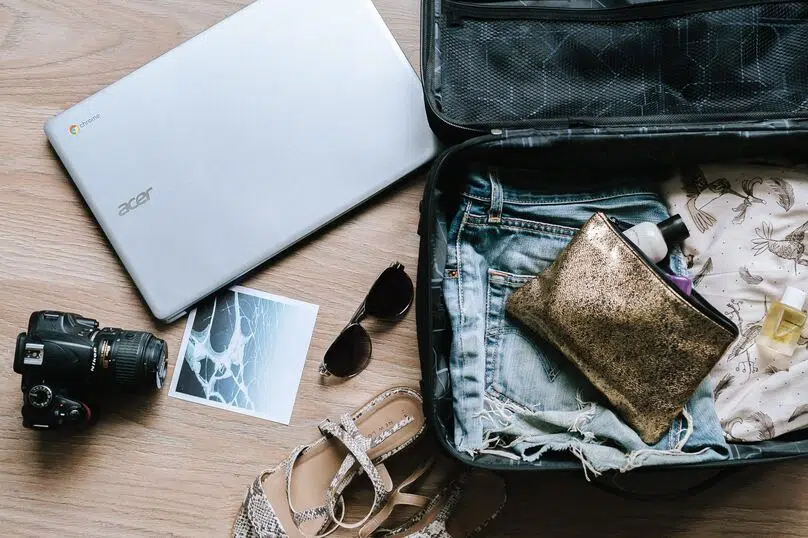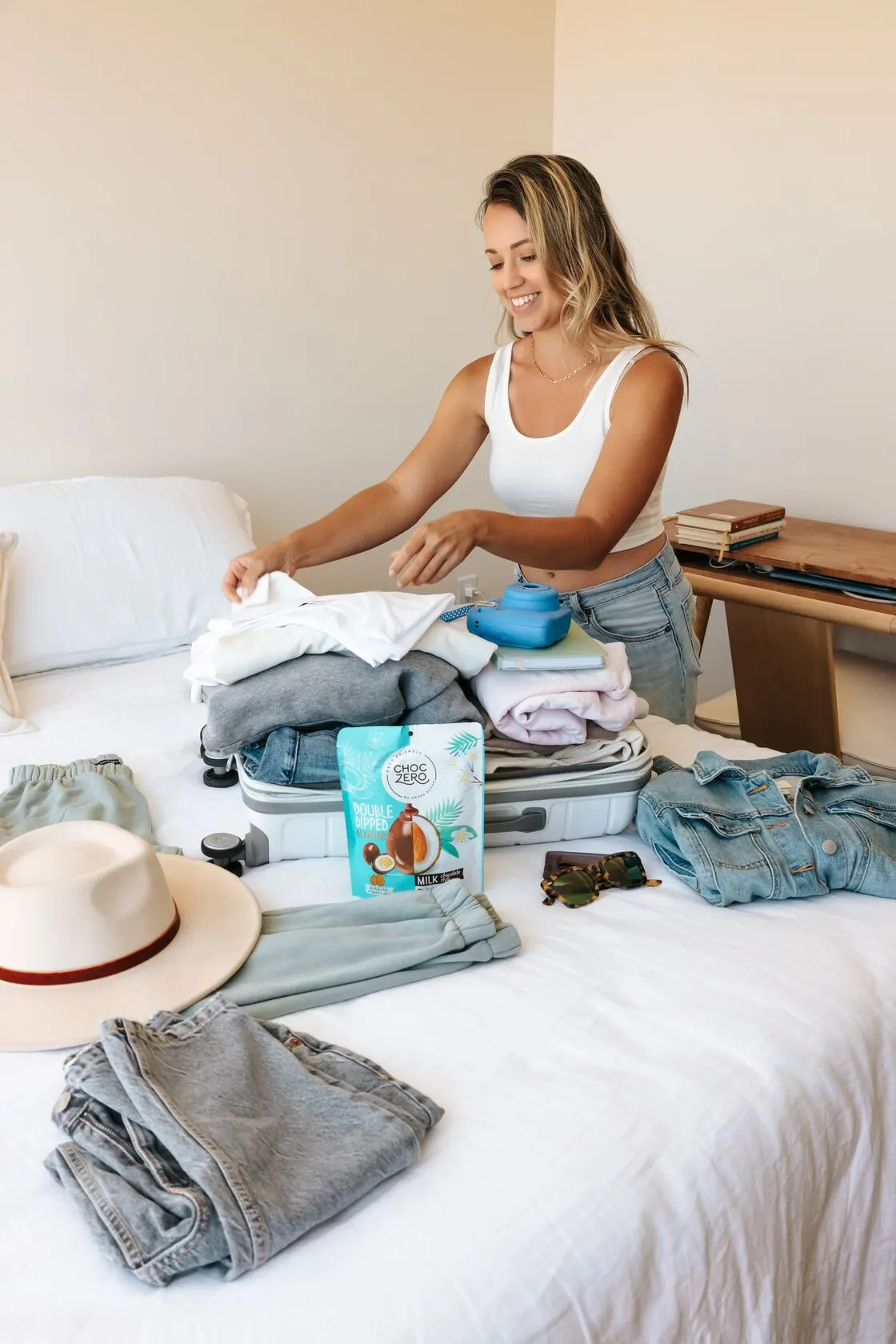
Packing a suitcase can be daunting, especially if you want to maximize your luggage space and organize your belongings. Whether preparing for a short trip or an extended vacation, understanding the packing process is essential to ensuring a stress-free journey.
This article will guide you through the steps and techniques on how to pack a suitcase efficiently, including tips on packing clothes, toiletries, and other essentials. One of the keys to efficient packing is knowing how to pack your clothes properly; this will keep your items wrinkle-free and save you some valuable space in your suitcase.
Another vital aspect to consider is packing toiletries and other travel essentials strategically to ensure you have everything you need without overpacking. Lastly, we will discuss some practical packing techniques to help you make the most of your luggage space, allowing you to travel light and worry-free.
Key Takeaways
- Develop an understanding of the packing process to ensure a stress-free journey.
- Learn how to efficiently pack clothes, toiletries, and other essentials to maximize luggage space.
- Explore practical packing techniques to travel light and simplify your trip.
Understanding the Packing Process
Choosing the Right Suitcase
The first step in learning how to pack a suitcase is selecting the right luggage for your trip. Consider the duration of your journey, your destination, and the type of items you plan to bring along. A hard-shell suitcase, no more than 22 inches tall, is an excellent option for avoiding overpacking and complying with most airlines’ carry-on size restrictions.
Opt for luggage with sturdy wheels and handles for easy airport transport. If you need more flexibility in size and capacity, a duffel bag might be an excellent alternative to a traditional suitcase.
Preparing a Packing List
Before diving into the Tetris-like challenge of arranging your items in your luggage, take some time to create a packing list; this helps you stay organized and ensure you remember all essentials. Start your list a few days before your departure date, giving you ample time to gather last-minute items and make adjustments.
While preparing your packing list, consider these tips:
- Clothing: Plan your outfits according to your destination itinerary, the local weather, and dress code requirements.
- Toiletries: Pack travel-sized toiletries, and consider the liquid restrictions for air travel.
- Electronics: Remember your chargers, adapters, and any necessary device accessories.
- Important documents: Ensure you have your passport, boarding passes, and other required travel documents.
- Miscellaneous: Include less obvious items such as a luggage scale, reusable water bottle, or a small first-aid kit.
By mastering the art of choosing the right suitcase and preparing a comprehensive packing list, you will be well on your way to perfecting the packing process and enjoying a stress-free journey.
Packing Clothes Efficiently

Rolling vs. Folding
When it comes to packing clothes efficiently, it’s important to know the difference between rolling and folding. Rolling is best for soft, non-bulky items like t-shirts, jeans, and cotton pants. This method helps reduce wrinkles and save space in your suitcase.
On the other hand, folding is ideal for pants and stiffer garments like dress shirts and wrinkle-resistant fabrics. To ensure your clothes stay wrinkle-free, fold them along the garment’s natural lines and creases.
Organizing with Packing Cubes
Packing cubes can be a game-changer for keeping your suitcase organized. These lightweight cubes come in various sizes and can compartmentalize your clothes, accessories, shoes, and socks.
Here’s a suggested way to use packing cubes:
- Small cubes: socks, underwear, bathing suit, belts, and accessories
- Medium cubes: t-shirts, lightweight tops, and shorts
- Large cubes: jeans, dress pants, dresses, and jackets
By packing cubes, you can easily find and locate the items in your suitcase, making your travels much more enjoyable.
Maximizing Space with Bulky Items
Packing bulky items, like coats and sneakers, can be a challenge. Here are some tips to help you maximize space with bulky items:
- Choose a lightweight coat and wear it while traveling: Instead of packing it in your suitcase, opt for a lightweight jacket that you can wear on the plane.
- Utilize the space inside your shoes: Put small or soft items like socks, underwear, or flip-flops inside your shoes to maximize space.
- Place bulky items at the bottom of your carry-on: To create a stable base in your suitcase, put bulky items like shoes or a blow dryer at the bottom; this helps to ensure that delicate items won’t get crushed by heavier ones.
- Roll large clothes tightly: If you have bulky clothes like sweaters or hoodies, roll them tightly and place them at the edge of your suitcase. This technique saves space and keeps your luggage neat and tidy.
By following these tips on rolling vs. folding, organizing with packing cubes, and maximizing space with bulky items, you’ll be well on your way to packing your suitcase efficiently and enjoying a stress-free travel experience.
Packing Toiletries and Other Essentials
Managing Toiletry Bags
Toiletry bags are essential for organizing your bathroom and grooming items. When selecting a toiletry bag, look for one with multiple compartments and external pockets for easy access.
Additionally, consider a waterproof or easy-to-clean material, as spills can happen during travel. Here are some items to include in your toiletry bag:
- Toothbrush and toothpaste
- Travel-size shampoo, conditioner, and body wash
- Hairbrush or comb
- Hair products (gels, sprays, etc.)
- Razor and shaving cream
- Deodorant
- Makeup and makeup remover wipes
- Medications (both prescription and over-the-counter)
- Bandages and first aid essentials
Remember to follow the TSA’s 3-1-1 rule for liquids, gels, and aerosols in your carry-on bag. And if you want to get through security faster, learn how to get TSA PreCheck for free so that you can skip some of the lines.
Packing Shoes Efficiently
Place shoes in individual bags or shoe cover to protect your clothes from dirt. Pack shoes in the suitcase’s bottom, filling any empty spaces with small items like socks or rolled-up belts to maximize space. Keep the heavier shoes near the suitcase’s wheels to maintain balance when rolling it.
Packing Personal and Travel-Size Items
When packing your suitcase, you must be mindful of the space and weight limitations. To maximize space, opt for travel-size toiletries and grooming products.
Not only will this save you space, but it will also reduce the chances of spills and leaks in your luggage. Consider transferring your favorite products into travel-sized containers to keep the comforts of home with you on your journey.
In addition to toiletries, don’t forget to pack the following essentials:
- IDs, passports, and travel documents
- Electronic devices (phone, laptop, tablet, camera, headphones)
- Chargers and adaptors
- Books or e-readers for entertainment
- Undergarments, pajamas, and weather-appropriate clothing
- Jewelry and other valuables (preferably in a separate, secure bag)
- Medications and prescriptions
- Snacks and water for long flights or train rides
- Wipes, hand sanitizer, and tissues for cleanliness on the go
- Strollers, car seats, or other necessary items if traveling with children
By carefully considering your needs and packing strategically, you’ll be better prepared to enjoy your trip without unnecessary stress or a cluttered suitcase.
Efficient Packing Techniques
Using Suitcase Compartments Strategically
When packing a suitcase, it’s essential to use the compartments strategically. Start by placing your shoes at the bottom of your suitcase to prevent them from crushing other items.
If you have boots or other large footwear, consider wrapping them in a tissue or thin layer of clothing to prevent damage to other items in your luggage.
Next, roll your soft garments like t-shirts, jeans, and knitwear, and organize them with packing cubes. This not only saves space but also minimizes wrinkles. Place breakable items in the center of your suitcase and use clothing as a cushion to protect them from impact during your journey.
Lastly, use a laundry bag to separate your dirty and clean clothes. This way, your belongings will remain organized throughout your trip, making repacking a breeze when it’s time to return home.
Avoiding Luggage Troubles
One of the most stressful aspects of traveling is dealing with airport security, luggage issues, and possible loss of personal items. To avoid these potential headaches, follow these tips:
- Check your airline’s luggage size and weight restrictions before packing. Overpacking can incur additional fees or even gate-checking your bags at the last minute. If your luggage exceeds the allowed dimensions or weight, consider carrying a personal item like a backpack or tote bag to hold any excess items or last-minute additions.
- Create and follow a packing list to ensure you remember all must-haves, such as your wallet, keys, and essential travel documents.
- Always secure your suitcase with a lock to prevent theft and tampering. Transportation Security Administration (TSA) approved locks are best, as they allow security agents to open your luggage without damaging the lock if necessary.
- Research any restrictions or specific packing requirements for your destination country when traveling internationally. Different cultures and airport security procedures may require adjustments to your packing strategy.
Incorporating these efficient packing techniques while staying aware of luggage-related challenges will help make your trips smoother and less stressful.
Roll vs. Fold Clothes
Rolling clothes is excellent for soft, non-bulky items like sweatpants, pajamas, and t-shirts. Folding is best for stiffer garments like dress shirts and pants. Consider your wardrobe and choose the best method for each item. You may find that combining the two methods works well for you.
What Is the Best Way To Fold Clothes?
- Lay them flat on a surface and fold them neatly, creasing the edges.
- For shirts, fold the sleeves inward and then fold the shirt in half horizontally.
- For pants, fold them in half with the legs together and then fold them again along the zipper or seam.
Maximizing Suitcase Space
To maximize space:
- Use packing cubes or compression bags to keep your items organized and compact.
- Please make use of empty pockets and crevices by stuffing them with smaller items like socks or undergarments.
- Place heavier items on the suitcase’s bottom and arrange the lighter items on top.
Essential Packing Items
Pack essential items like toiletries, chargers, and a small first aid kit. Keep travel documents, identification, and essential medications in an easily accessible spot. Remember items that can make your flight or car ride more comfortable, like a travel pillow, eye mask, or earplugs.
Packing for Different Climates
When traveling to a place with a contrasting climate, it’s wise to pack clothing items that can be layered to adjust to temperature fluctuations. Opt for lightweight pieces that can be easily mixed and matched. Don’t forget to pack weather-appropriate accessories like hats, scarves, and gloves for colder destinations, sunblock, and a swimsuit for warmer locations.
Psst… looking for cute swimsuits? Check out this youswim review for an honest review of this size inclusive swimsuit brand.
Final Thoughts on How to Pack a Suitcase
When it comes to packing a suitcase, a well-organized approach is essential. Keep in mind the various techniques to maximize space and protect your belongings. Consider rolling your softer items and placing them at the bottom of the suitcase. It will provide a cushion for the other things you pack.
Lastly, secure your suitcase with a built-in lock or a TSA-approved padlock to ensure your belongings remain safe during travel. With these packing tips in mind, you are well on your way to a stress-free and organized travel experience.
This article originally appeared on Savoteur.

Olu is a passionate entrepreneur who loves to blog on his site- frenzhub about life-saving lifestyle habits, hacks, and travel. He lives in the Western part of Canada. Olu has two bachelor’s degrees in Veterinary Medicine and Applied Accounting with a CPA designation. He currently shuffles time between completing a Master of Business Administration degree education, Accounting professional practice, and Blogging. He has freelanced lifestyle write-ups and articles for many websites since 2010.


